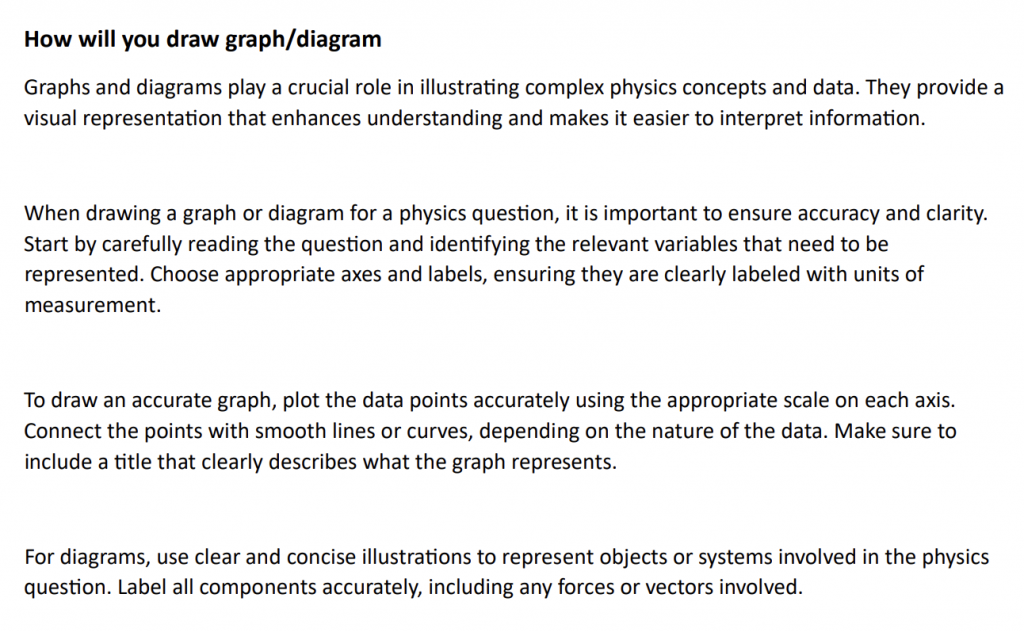How to Draw Graph Diagrams
Summary:
The PDF focuses on the importance of graphs and diagrams in solving physics questions. It outlines a step-by-step guide on effectively creating these visual aids to enhance understanding and interpretation of complex physics concepts. The document emphasizes accuracy, clarity, and organization when drawing graphs and diagrams.
Initially, it advises identifying the relevant variables that need to be represented and choosing appropriate axes and labels. The importance of using the correct scale on each axis is highlighted to avoid overcrowding the graph. Data points should be plotted accurately and connected with smooth lines or curves, depending on the nature of the data. Labels and units of measurement should be indicated.
The document also provides tips on analysing and interpreting the completed graph or diagram. It suggests looking for patterns, trends, or specific values relevant to answering the physics question at hand. The guide concludes by stressing that regular practice can improve one’s skills in visually presenting solutions to physics problems effectively.
Excerpt:
How to Draw Graph Diagrams
Graphs and diagrams are crucial in illustrating complex physics concepts and data. They provide a visual representation that enhances understanding and makes it easier to interpret information.
When drawing a graph or diagram for a physics question, it is important to ensure accuracy and clarity. Start by carefully reading the question and identifying the relevant variables that need to be represented. Choose appropriate axes and labels, ensuring they are clearly labelled with units of measurement.
To draw an accurate graph, plot the data points using the appropriate scale on each axis. Connect the points with smooth lines or curves, depending on the nature of the data. Make sure to include a title that clearly describes what the graph represents.
For diagrams, use clear and concise illustrations to represent objects or systems involved in the physics question. Label all components accurately, including any forces or vectors involved.


Reviews